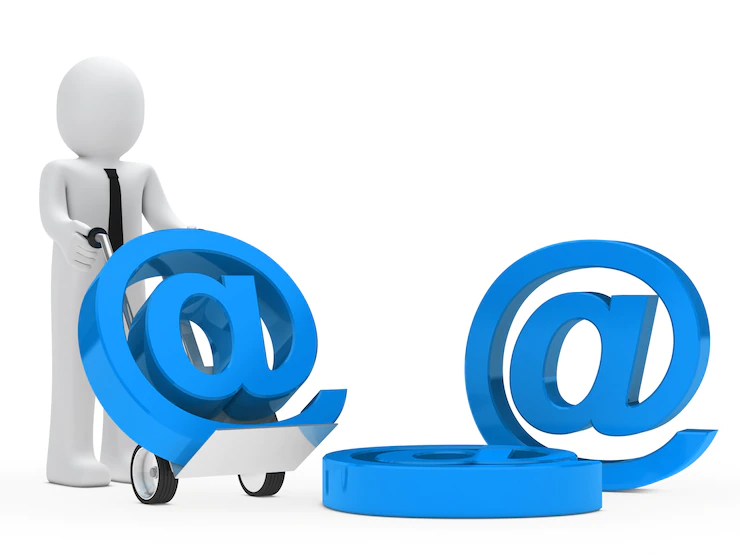Companies often measure success in terms of profits, and one of the most significant ways that companies use to track this is through their email automation marketing. The problem is that many companies are not leveraging the power of data. In order to get the most out of their email marketing efforts.
Check out this article for know about Email Automation, Also the Success And Failure In Email Marketing when it comes to email marketing.
Data is crucial if you want to be successful in email marketing. But it’s not always the easiest thing to access. That’s why we’ve compiled a list of 5 ways you can get hard data on your email campaigns. So that, you know exactly what’s working and what isn’t.
Data is the difference between success and failure when it comes to email marketing. Learn about what data you should focus on, how to track it. And lastly which tools are best for email marketing automation. In order to make sure your emails are as effective and personalized as possible-and get the best results possible.

Difference Between Success and Failure in Email Marketing
Data is the bread and butter of email automation marketing. It allows you to segment your audience, personalize your messages, and track your results. Without data, you’re shooting in the dark.
With data, you can see what’s working and what’s not. You can make adjustments on the fly to improve your results. And you can stay confident that your efforts are paying off.
Click Here to know the details of our Email Campaign Service
Also, You Can Get Our FREE Trial from Here
There’s a big difference between success and failure in email automation marketing, and it all comes down to data.
The most successful email marketers are constantly collecting data and using it to inform their decisions. They track every metric imaginable. Also, track from open rates and click-through rates to unsubscribe rates and spam complaints.
They use this data to segment their lists, test different subject lines and content, and ultimately send emails that their subscribers want to read.

The difference between success and failure in email marketing is the ability to use data to make decisions. Email marketing is a complex process with many moving parts. Data is the key to understanding what’s working and what’s not.
With so much data available, it can be overwhelming to know where to start. The first step is to focus on your goals.
What are you trying to achieve with your email marketing? Once you have a clear goal in mind, you can start to collect and analyze data that will help you reach that goal.
There are a number of different metrics you can track, but some of the most important ones are open rate, click-through rate, unsubscribe rate, and complaint rate. By tracking these metrics, you can start to see which areas of your email marketing need improvement.
For example
If your open rates are low, that could mean that your subject lines aren’t effective or that your emails are going to spam folders. If your click-through rates are low, that could mean that your content isn’t relevant or interesting to your audience. And if you have a high unsubscribe rate or complaint rate, that could mean that people are finding your emails annoying or intrusive.
The bottom line is that data is essential for understanding what’s working and what’s not in email marketing. Without data, it’s impossible to know which changes you need to make to improve your results.
So if you’re serious about email marketing success, you can contact with us for email campaigns.

Why Use Data to Optimize Emails in Email Automation?
In order to be successful, email marketers need to understand their audience and send relevant, targeted content and choose perfect email automation tools. Data can help optimize emails by providing insights into who is opening and clicking on links, what kinds of content they engage with, and when they are most active.
This information can use to segment audiences, personalize messages, and create more targeted campaigns that are more likely to result in engagement and conversions. Additionally, data can use to track results over time and measure the impact of different strategies on overall performance of email automation.
By using data to optimize email marketing efforts, businesses can improve their chances of success while also saving time and resources.
There are many benefits to using data to optimize emails. Perhaps the most obvious benefit is that it can help you improve your open rates.
By understanding which types of email content are most likely to open by your subscribers, you can ensure that your messages are more likely to be seen and read.
You can also know more about How to Set Up Automated Email Marketing Workflows (+ Examples)
In addition, to improving open rates, data can use to improve click-through rates.
By analyzing which links in your emails are being clicked on most frequently, you can make sure that future emails contain more of the types of content that your subscribers are interested in.
Also, data can use to improve conversion rates. By understanding which types of email content lead to the greatest number of conversions, you can make sure that your messages are focus on content. That is most likely to result in a sale or other desired action.
Finally, data can use to segment your email list. This allows you to send more targeted and relevant messages to different groups of subscribers. Which can further improve open and click-through rates while also increasing the likelihood of conversion.

Data to Measure Engagement in Email Automation Marketing
When it comes to email marketing, data is everything. Without data, you can’t know what’s working and what isn’t. And without data, you can’t improve your results.
The good news is that there are a lot of great Email Automation tools out there. That make it easy to track your email marketing data.
Here are a few of the most important things you should be tracking for Email Automation:
- Email opens: This one is pretty self-explanatory. You want to know how many people are opening your emails. This number will give you a good idea of how successful your subject lines. People have interests whether or not in what you have to say.
- Email clicks: Once someone has opened your email, you want them to click through to your website or landing page. Also, tracking how many people click on links in your emails will give you a good idea of how effective your call-to-actions are.
- Email unsubscribes: No one likes to see this number go up, but it’s important to track nonetheless. If you see a sharp increase in the number of people unsubscribing from your emails, it could be an indication that something is wrong with your content or that people are no longer interested in what you have to say.
There are a number of factors that contribute to successful email marketing through email automation. After all, data is what will make or break your campaign. Without accurate data, it’s impossible to know who your target audience is. After that, what messaging will resonate with them, or even when and where they’re checking their email.

Data to Measure Deliverability in Email Automation Marketing
There are a lot of data points that you can measure when it comes to deliverability, but there are a few that are particularly important.
First, you need to measure your bounce rate. This is the percentage of emails that are sent that don’t make it to the recipient’s inbox. A high bounce rate is a sign that your emails are not being delivered.
Second, you need to measure your open rate. This is the percentage of recipients who open your email. A low open rate could be a sign that your emails are not relevant to your audience or that they are going to spam folders.
Third, you need to measure your click-through rate. This is the percentage of people who click on a link in your email. A low click-through rate could be a sign that your email content is not compelling or that your call-to-action is not clear.
Finally, you need to measure conversions. This is the percentage of people who take the desired action after receiving your email. A low conversion rate could be a sign that your email is not effective at driving people to take action.
These are just a few of the data points that you can measure to assess deliverability. The key is to track the right data and to use it to make improvements to your email marketing strategy.

There are several key data points that you should measure to gauge the deliverability of your email automation marketing campaigns:
- Bounce rate: This measures the percentage of emails that could not be delivered. A high bounce rate indicates that there may be problems with your email list or delivery process.
- Open rate: This measures the percentage of recipients who open your email. A low open rate could mean that your subject lines are not effective or that your emails are going to spam folders.
- Click-through rate: This measures the percentage of recipients who click on links in your email. A low click-through rate could indicate that your content is not relevant to your audience or that your call-to-action is not effective.
- Complaint rate: This measures the number of recipients who mark your email as spam. A high complaint rate results in your emails being blocked by ISPs or landing in spam folders.
Data is the most important aspect of email automation marketing.
Also, is essential to measure deliverability in order to gauge the success of your campaigns.
Monitoring these data points will help you to identify any deliverability issues so that you can take steps to improve your campaign performance.
There are a number of data points you can measure to assess the deliverability of your email marketing campaigns. This data can help you identify potential problems and take steps to improve your deliverability rate.

Basically, data is the most important point to measure is your open rate. This tells you how many people opened your email. A high open rate indicates that your email is getting through to people’s inboxes and that they’ve interests in what you have to say. A low open rate maybe an indication that your emails are being sent to spam folders or that people are not finding them interesting.
Another data points you can measure include click-through rate (CTR), unsubscribe rate, and complaint rate. The CTR measures how many people clicked on a link in your email. The unsubscribe rate tells you how many people unsubscribed from your list after receiving your email. And the complaint rate measures how many people marked your email as spam.
Monitoring these data points will give you a good idea of how well your email marketing campaigns are performing and where there might be room for improvement.
Conclusion
In today’s business world, data is everything. Having the right data can mean the difference between success and failure in email marketing. If you’re not using data to inform your decisions, you’re likely missing out on opportunities to improve your results.
Fortunately, there are a number of ways to collect and use data to improve your email marketing efforts. By investing in a good Email Service Provider (ESP), you can gain access to robust tools that will help you collect and analyze data.
With the right data, you can make smarter decisions about what content to send. Also, when to send it, and who to send it to.
As a result, you’ll able to achieve better results with your email marketing campaigns through email automation.


